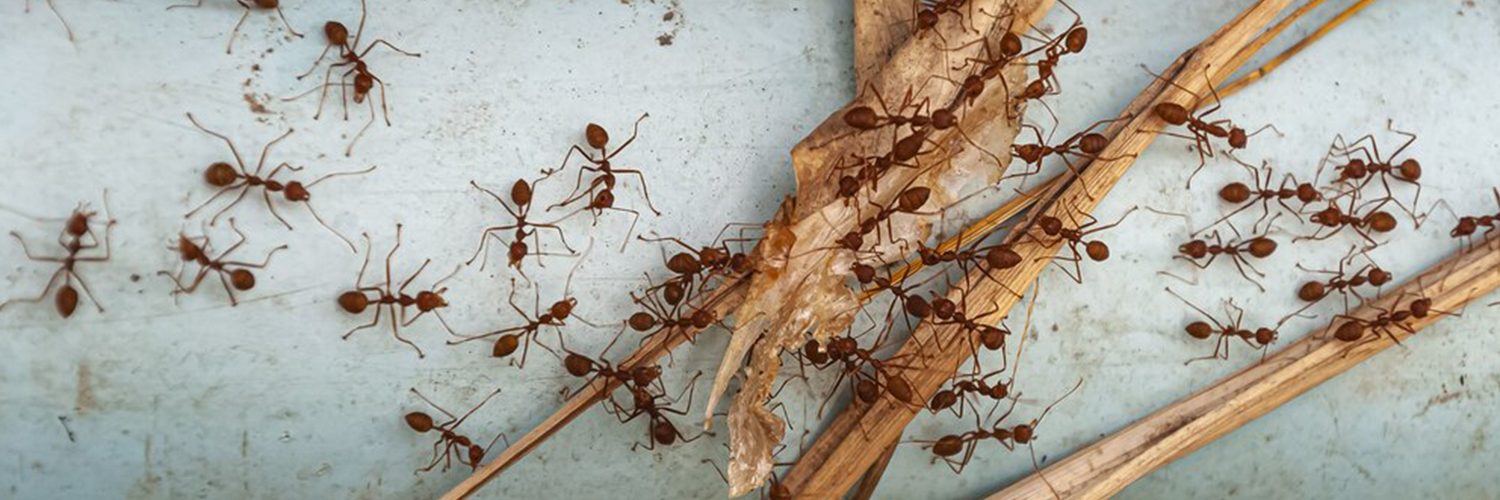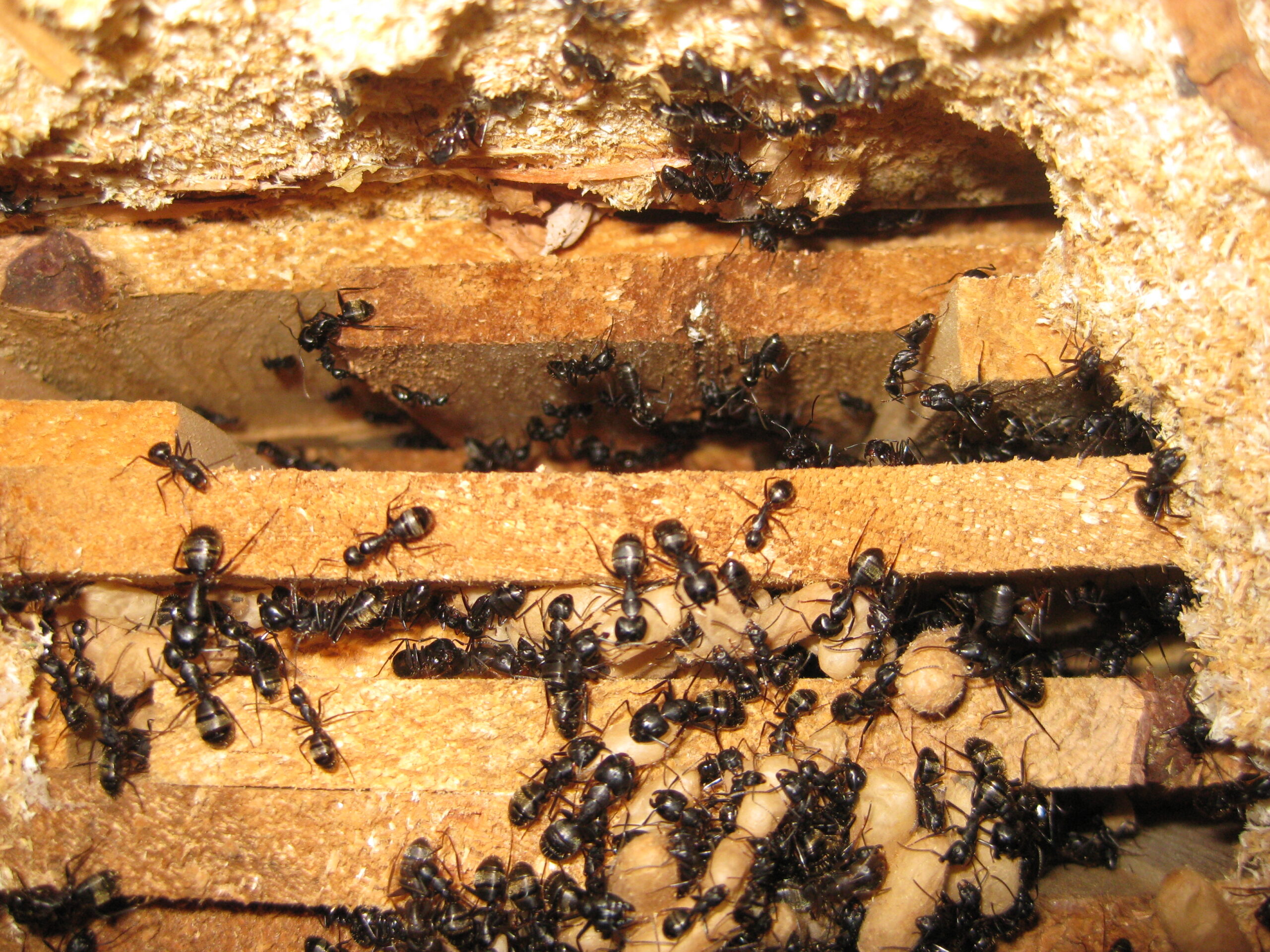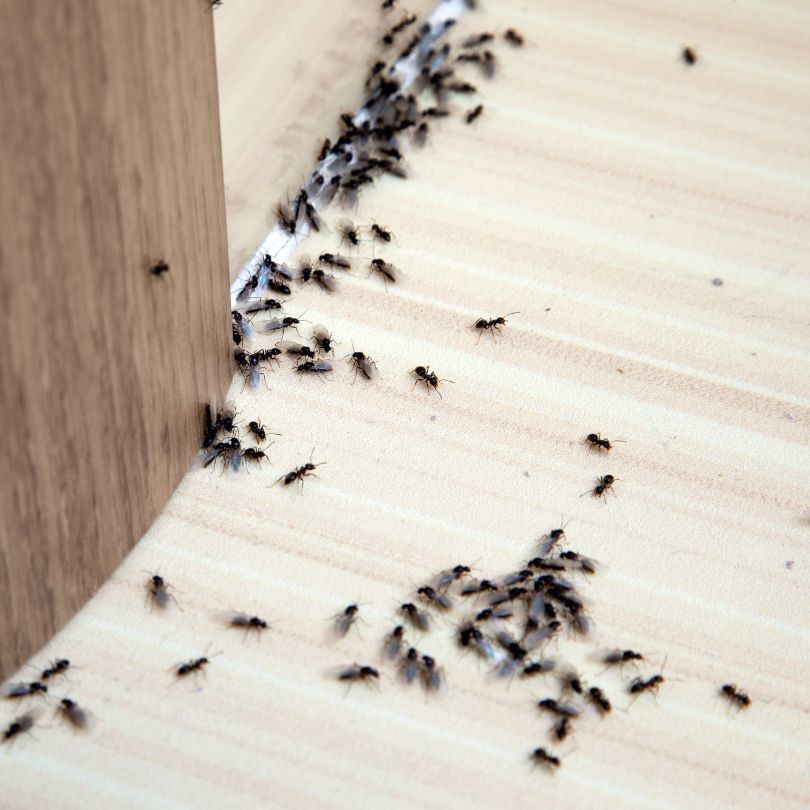Ant Extermination Services in Coral Springs
Protecting Your Florida Home from Persistent Pests
Coral Springs, known for its family-friendly neighborhoods, bustling commercial districts, and carefully planned communities, is a prime example of South Florida’s vibrant lifestyle. Yet this pleasant environment also makes the region ideal for a wide variety of ants to flourish year-round. A few ants trailing across the countertop might seem harmless at first, but under Florida’s subtropical conditions, ant colonies can grow quickly and become a significant challenge if not addressed. This page will walk you through the most common ant species in Florida, why they’re so prevalent in Coral Springs, and how a focused extermination program can keep them at bay. We’ll also explore our extended service areas in Margate and Coconut Creek to ensure comprehensive coverage for nearby residents and businesses.
Why South Florida’s Climate Encourages Ant Infestations

Ants are remarkably adaptable creatures. Their survival depends on a steady supply of food, water, and suitable nesting sites—elements that Coral Springs provides in abundance. Florida’s near-tropical climate offers the warmth and humidity ants need to remain active every season:
- Year-Round Warmth
In many other parts of the country, ants die back or go dormant during cold winters. However, Coral Springs rarely sees temperatures that dip low enough to hamper ant reproduction or foraging. This uninterrupted cycle means colonies have more time to expand and multiply. - Frequent Rainfall
While heavy rainstorms can temporarily flood ant nests, they also maintain moisture levels in the soil. Ants thrive in damp environments, particularly species that nest near or around homes with moisture problems. When rainfall drives ants out of soaked ground, they may head indoors seeking drier conditions—leading to sudden infestations in kitchens and bathrooms. - High Humidity
The lush, landscaped lawns of Coral Springs, along with its many lakes and canals, contribute to an environment that stays relatively humid. Ants need consistent moisture to survive, so they’re drawn to spots like sprinkler heads, hose connections, or drip lines around the house. - Abundant Vegetation
Neighborhoods in South Florida are typically planted with ornamentals, shrubs, and tropical foliage that provide shelter for ants. Leaf litter, mulch, and dense groundcover create hidden corridors where colonies can form unnoticed until they invade indoor spaces.
Common Ant Species in Coral Springs
Florida hosts a vast array of ant species, but the following are the ones most often discovered in and around Coral Springs homes and businesses:
- Ghost Ants
- Appearance: Ghost ants are tiny, with translucent or pale abdomens and dark heads. Their coloring can make them tough to spot initially.
- Habits: They gravitate toward moisture and sweet foods, often infesting kitchens or bathrooms. Ghost ants can form large indoor colonies behind baseboards or inside wall voids.
- Concerns: Although not structurally damaging, ghost ants can contaminate food-prep areas and rapidly proliferate under favorable conditions.
- Carpenter Ants
- Appearance: One of the largest household ants in Florida, typically black or with red-and-black coloration.
- Habits: Carpenter ants burrow into damp or decaying wood to create nests, weakening structural elements if left unchecked. They don’t consume wood like termites do, but their galleries can cause damage.
- Concerns: In a humid climate, wooden door frames or roof eaves can retain moisture, making them susceptible to carpenter ant infestations that compromise the building’s integrity.
- Fire Ants
- Appearance: Recognizable for their reddish-brown color and dome-shaped mounds in lawns or fields.
- Habits: Highly aggressive, fire ants swarm to defend their nests when disturbed and deliver painful stings. They often build colonies in sunny, open spaces such as lawns, playgrounds, or sports fields.
- Concerns: Fire ant stings can cause welts and pose a threat to children, pets, and those with allergies. Multiple mounds can render outdoor areas challenging to use safely.
- Pharaoh Ants
- Appearance: Tiny, light-yellow ants that commonly nest indoors in warm, humid areas.
- Habits: Pharaoh ants are known to split into multiple colonies (budding) if their nest is disturbed, making them especially difficult to remove with partial treatments. They frequently invade kitchens, bathrooms, and spaces near water heaters.
- Concerns: Spraying the colony can worsen an infestation by prompting ants to scatter and form new nests. An extermination strategy usually involves targeted baiting.
- Argentine Ants
- Appearance: Medium-sized, uniformly dark brown ants typically seen moving in steady trails along walls or baseboards.
- Habits: They often form expansive “supercolonies” with multiple queens, allowing them to reproduce rapidly. Argentine ants favor damp settings, often nesting in flower beds, mulch, or potted plants.
- Concerns: Their sheer numbers can overwhelm a property, and their ability to merge colonies makes them highly resilient once established.
- White-Footed Ants
- Appearance: Dark bodies contrasted by lighter-colored legs, giving them a distinctive two-tone look.
- Habits: White-footed ants frequently settle in roof eaves, soffits, or wall voids, foraging indoors for sweet, sugary foods.
- Concerns: While not destructive to wood, their large colonies can lead to persistent indoor trails if not promptly addressed.
Identifying which ant species you’re dealing with is vital for choosing the correct extermination tactic. For instance, ghost ants may respond well to baits placed around moisture-heavy areas, while a fire ant problem might require direct mound treatments.

Risks and Dangers of Ant Infestations
Ants vary in the degree of hazard they present, but even harmless-looking species can bring potential issues:
- Health Concerns: Fire ants inflict painful stings, risking allergic reactions. Ants that crawl through trash or sewage can transfer bacteria to your countertops or food.
- Property Damage: Carpenter ants can degrade structural wood. If unchecked, this leads to costly repairs involving beams, window frames, or other wooden elements.
- Reduced Quality of Life: Persistent ant trails in kitchens, bathrooms, or living rooms can be unsightly and unsanitary. Fire ant mounds in the yard hinder outdoor activities for families and pets.
- Business Reputation: Commercial establishments in Coral Springs, like restaurants or hotels, risk losing customers if ants become too visible. Maintaining a clean, pest-free environment is crucial for public-facing businesses.
Tailored Extermination Techniques
In Coral Springs’ climate, a generic off-the-shelf spray is unlikely to solve the root of the ant problem. Instead, effective control strategies hinge on species identification, targeting both the foraging workers and the hidden nest:
- Inspection and Colony Identification
- Locating ant trails, nesting points, and entry routes is the first step. By observing the ants’ size, color, and movement patterns, specialists can often pinpoint the species, guiding the appropriate approach.
- Strategic Baiting
- Baits are popular for species like ghost ants or pharaoh ants that scatter if directly attacked. Slow-acting baits let foraging ants carry poison back to the colony, ensuring queens and larvae are also affected.
- Non-Repellent Treatments
- Sprays that ants can’t detect work well against Argentine ants and carpenter ants. Workers inadvertently bring the treatment deeper into the colony, reaching the queen(s).
- Direct Mound Treatment
- Fire ants often need focused mound applications. Pouring specialized products onto their mounds or using broadcast treatments can neutralize the nest.
- Care must be taken to avoid simply driving the ants underground or encouraging them to relocate if the treatment doesn’t reach the queen.
- Pheromone Trail Disruption
- Cleaning surfaces with general household cleansers can remove the ants’ chemical trails, preventing more ants from following the same path to food or water.
- Sealing and Exclusion
- Filling in cracks around doors, windows, and foundations denies ants easy entry.
- Repair leaks and address moisture issues that may invite ants indoors.
Practical Prevention Measures
Even after successful extermination, preventing future invasions is critical in a humid region like South Florida. Simple routines can drastically reduce the likelihood of reinfestation:
- Immediate Cleanups: Whether you spill sugary juice or drop a crumb of food, wiping it up quickly removes an easy meal for ants.
- Proper Food Storage: Keep pantry items like cereals, grains, and pet food in sealed containers. Sealed containers also prevent odors from attracting ants through hidden crevices.
- Garbage Management: Outdoor bins should have tight-fitting lids, and rinsing them periodically helps reduce lingering odors. Indoors, empty trash regularly and avoid letting it overflow.
- Landscape Maintenance: Cutting back bushes and tree limbs that touch exterior walls limits the “bridges” ants use to reach your home. Tidy up mulch beds and leaf litter as well.
- Moisture Control: Fix leaky faucets, clear rain gutters, and avoid letting water pool in your yard. Ants, like many insects, need water sources to thrive.
These steps not only reduce ant attractions but also foster a healthier home environment by controlling odors, clutter, and moisture.

Covering Margate and Coconut Creek
While Coral Springs is a central hub for our ant extermination services, the same subtropical climate and urban planning factors that encourage ant populations here apply just as readily to surrounding locales. Margate and Coconut Creek experience similarly warm weather, lush vegetation, and frequent rainfall, making them prime territory for ant infestations.
- Margate: Known for its blend of residential communities, waterways, and parks, Margate provides ample nesting spots for various ant species. Closely spaced homes and condominiums mean that once ants settle in one property, they can easily expand to neighboring units or yards.
- Coconut Creek: Often referred to as the “Butterfly Capital of the World,” Coconut Creek’s emphasis on green spaces and natural preserves is wonderful for local wildlife—but also invites ant colonies. Rich soil, well-maintained gardens, and numerous lakes or canals create an environment where ants can flourish if unchecked.
By extending our extermination services to Margate and Coconut Creek, we help ensure residents across North Broward County can take swift, effective action against ant invasions. The same combination of targeted treatments and diligent prevention that works in Coral Springs also applies in these nearby communities.
When Professional Help Is Essential
DIY measures and good housekeeping can resolve smaller ant problems. Still, certain situations call for more advanced solutions:
- Recurrent Infestations: If ants repeatedly return after you’ve attempted removal, there may be hidden nests or multiple queen colonies driving the problem.
- Carpenter Ant Damage: Signs of burrowing in wood—tiny shavings or damaged timber—require prompt intervention to prevent further structural decline.
- Fire Ant Mounds in the Yard: Multiple mounds can limit your ability to safely enjoy your property, especially if you have children or pets who could inadvertently disturb the nests.
- Large Commercial Spaces: Businesses, hotels, and restaurants can’t afford even brief lapses in pest control. A professional plan helps maintain a tidy, ant-free reputation.
Experts trained in Florida ant species can identify infestations accurately, apply proven treatments, and offer tips on reinforcing pest prevention. This often results in more lasting relief than ad hoc or random sprays.
Preserving Your Peace of Mind
Ants might be tiny, but they can have an outsized impact on comfort, safety, and the enjoyment of your living space. With Coral Springs’ warm climate, you need to stay alert—lingering crumbs, standing water, or unsealed cracks in the foundation can swiftly escalate into a full-blown invasion. Meanwhile, areas like Margate and Coconut Creek share many of the same weather patterns and ecological conditions, creating a similar need for proactive pest management.
A well-thought-out extermination plan targets specific ant species with tailored methods—whether it’s baiting ghost ants around moisture-prone areas or conducting direct mound treatments for aggressive fire ants. Combined with sealing entry points, managing yard debris, and consistent cleaning habits, these strategies help ensure your home or commercial property remains ant-free.
By addressing the root causes of infestations, you reduce the chance of recurring problems and free yourself to focus on the best parts of living in South Florida—like enjoying sunny afternoons, lush parks, and close-knit community events. When in doubt, don’t hesitate to reach out for professional guidance: it could mean the difference between a short-lived annoyance and a long-term solution for eliminating ants from your environment.
